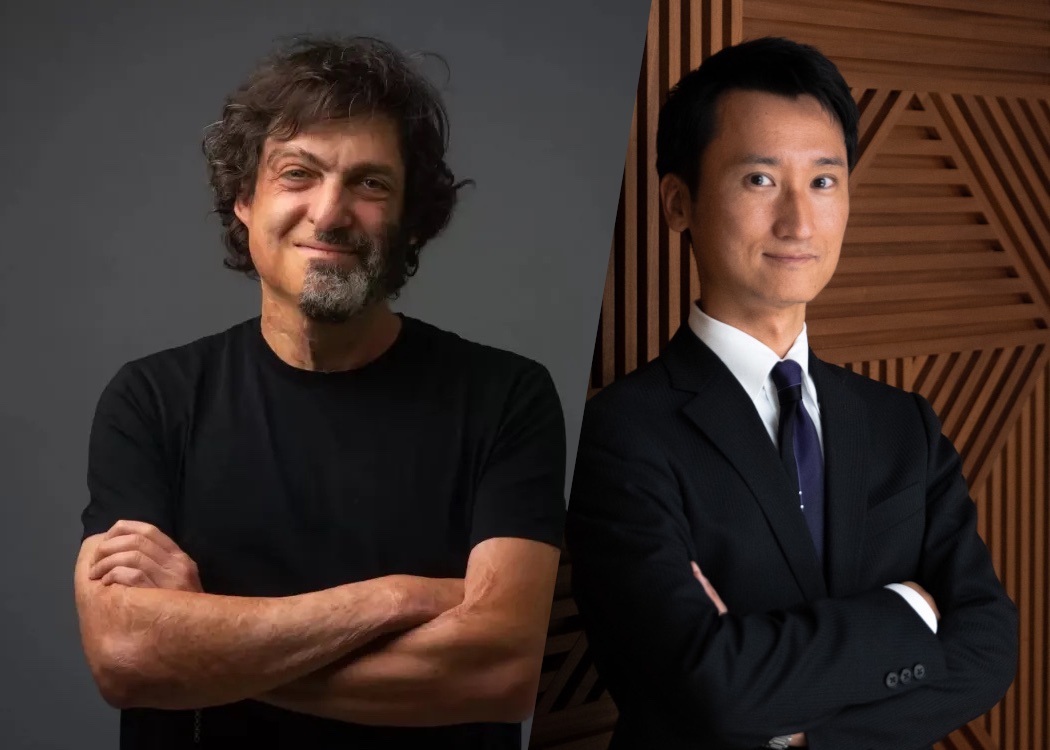One of the major concerns for many entrepreneurs and business leaders is how to capture the interest of an audience during public communication (presentations, annual addresses, etc.). Further, they want to know how to ensure that they are engaging and that their message and vision truly lands.
To gain insights into this challenge, we interviewed Professor Moran Cerf, a neuroscientist and expert in human behavior. Through his research and experience, he reveals the hidden elements that influence communication.

Dr. Moran Cerf
Professor at Columbia University
Dr. Moran Cerf is a professor of neuroscience and business at Columbia University. He holds a PhD in neuroscience (Caltech), an MA in Philosophy, and a BSc in Physics (Tel-Aviv University). In his work, Prof. Cerf helps individuals and businesses harness current knowledge about the brain to improve thinking, leadership, personal development, decision-making, and customer engagement.
He has mentored over 50 students, holds multiple patents, and has published 5 books and over 70 academic papers in journals such as Nature and Science, as well as popular science journals such as Scientific American Mind, Wired, New Scientist and more. He has made much of his work accessible to the public via his talks at PopTech, TED, TEDx (‘most TEDx talks worldwide’), the World Economics Forum, etc., gathering millions of views and a large following.
A message contains So many factors besides its content.

Sato:
As a businessperson, I’ve seen many speeches and presentations, and I realized that similar content sometimes has a significantly different impression on the audience depending on who speaks. From a neurological perspective, could you explain how it happens?
Dr. Cerf:
Communication is much more than just words. Verbal cues, the pace by which you speak, how you move your body, the speech intonation, and many other signals, together, make a difference. If you try to take some famous person’s speech, for example, Martin Luther King’s “I Have a Dream” speech. Even if you say the same words from that speech, it may not leave the same impact because you do not been all the history and background that is associated with Martin Luther King when he spoke. You would not be in the same context that King was back when he gave his speech, and the audience thereby would not have the same experience. Two people saying the same thing could have almost opposite outcomes because people read things between the words.
I will give you one example. A few years ago, I was asked to interview people who have committed crimes. Specifically, their specialty in life was in coning people and making them give them money. I was asked, as a neuroscientist, to try to understand how they do what they do, and I was doing this with a former FBI agent whose expertise was in reading people’s body language. While I was analyzing the content of the things they said and how their brains work, the FBI agent was looking at the cues revealed by their actions: how they move, how they use language, or how they communicate non-verbally. Through the investigation, it became clear that those con artists were masters not just of the content, but also of the delivery. They knew how to make things resonate with you, how to look into your eyes at the right moment, or how to smile at the right moment. There was this person I remember. The content he was saying was not quite convincing, but he had just looked like a trustworthy innocent person. Visually. He just came across as a softspoken, thoughtful person.Whatever he said sounded convincing despite the fact that he was mostly lying. And people were happy to give him a good amount of money. Eventually, he ended up in jail for being one of the biggest con artists in Europe.
The point I took from the experience is, that so many factors are part of a message besides the actual words, and all these factors need to be taken into account when you think about delivering a message. In some exercises we do when I teach this, we actually play a video of people’s presentations and speeches muted. You only get the visual and we test how convincing you seem without knowing what you say.
To an extent, we can predict what helps you give the best version of yourself, and we can also tell you what doesn’t work. Knowing that will certainly help you do a good job.
At presentations, align the brains of yours and audience brain-wise.
Sato:
How can we effectively capture interest during a presentation?
Dr. Cerf:
We know that there are a few things that work and a few things that do not work. Neuroscience-wise, I would say the in order to be engaging you want to “align your brain with those of the audience”. The more you know about how they think, the more likely you are to deliver an engaging message. This overrides everything else. Now the question is what drives engagement?
So, here are a few things that often work. Humor, for instance, is a very powerful tool. It breaks the ice and acts as a lubricant of communication. This is especially useful in the early stages of the communication. If you can say something humorous, it immediately diffuses tensions and people tend to listen to whatever comes afterwards more attentively. We quantified the amount of engagement you get after a moment of laughter and it is about 30 seconds of undivided attention gained following a moment where you made a person laugh. So if you can creates those peaks of amusement in key moments, you can guarantee more solid focus on the following parts of the message. This also grabs the attention of people who are currently not engaged in your talk. It essentially brings those who were drifting away back for a moment. Imagine a person who is not paying attention to you (say, someone who is checking their phone while you speak), and then hears everyone around them laughing because of something you said. That makes them wonder, “What did I miss? I feel it’s something I should pay more attention to”, and they then tune in for the next moments more carefully. Humor is very powerful way to recruit attention.
Another tool in your arsenal is “perceived vulnerability”. Generally, people who come across as humble, transparent, and trustworthy, get more support and warmth from the audience. If you are about to give a talk for, say, 1 hour, and can establish in the beginning that you are not only an expert, but also that you are not a bragger or that your credibility is high (and relevant), it is more likely that people will be more attentive to what you have to say and lower their guards and natural skepticism. Those are all very intuitive things to do, yet we noticed again and again people who fail to implement them or even do the exact opposite (i.e., start with bragging, or worth with “name dropping” or “humble bragging” – thinking this will impress the audience). The negative outcomes are typically hard to recover…
Other tools relate to the usage of your voice and body to manifest your points and make them more salient. For example the 3 P-s: pauses, posture, and position. Let’s elaborate. When you pause while you talk, whatever you say after the pause stands out and people pay more attention to it. This is an easy tool to use. Similarly, body postures make a big impact on people with respect to the delivery of content. Actors are very aware of that and spend a lot of time rehearsing the exact posture they will utilize to optimize their delivery. One tip that actors often give is to move the upper body (hand gestures, torso movement) more than the bottom (i.e., legs, or back and forth pacing). The position you choose to stand in should be deliberate, not just a place you “end up in” (without thinking). If you choose to stand behind a podium there should be a reason for it (communicate something more format). If you choose to sit on a chair, it should be purposeful (i.e., to seem more relaxed, or more intimate). Even the use of props (i.e., the microphone or notes) should be deliberate. It should not be used by default because “it is there” but rather because it serves a purposes (my colleague Neil deGrasse Tyson uses a handheld microphone because it helps him demonstrate things. The microphone is often “a spaceship”, or a “star that he orbits”, etc.). That is a deliberate decision and not just a casual prop that happens to be there.
Another thing to pay attention to are rhetoric tools. For example, asking questions (especially rhetoric questions) makes the audience think (and, often, answer the questions in their minds before they hear your answer) so you should consider when you want this to be utilized to benefits the flow of your content.
Finally, there are a lot of decisions to make about the content itself. Breaking long messages into short components is often helpful in communicating complex things in a digestible form. It also helps the audience predict how to allocate their own mental resources. When you give a talk for 1 hour, for instance, let the audience know that your 1-hour long lecture will be divided, say, into 4 parts. People’s attention always oscillates. And being able to plan, mentally, how to orchestrate their attention span will help them focus on the content. This is also why sometimes having people ask questions helps; it breaks down a long talk to smaller “brain nuggets” and gives people the opportunity to take time to internalize what they heard. Anyone who has seen a wedding speech knows that no one complains about a speech being “too short” (but a lot of people complain about ones that are too long). You can practice saying the same message in a compressed way, and you will get better at getting people more engaged because they will learn your cadence and that messages come in nuggets that they can digest.
Another thing that is helpful is repetition. By saying something in the beginning and repeating it multiple times you let the audience know it is important, and you help them remember it better. People often feel bad repeating themselves, but it is actually a very useful instrument in messaging.
And… the one that rises above all is… knowing your audience (I mentioned it before so this is me demonstrating how repetition works). If your audience is experts in a niche field, you want to speak to them differently than if they are, say, novices. If you speak to a kid, you might want to limit the historical analogies that predate their existence. If you speak to people who are hostile to you, try to leave out topics that cause friction to the end and start with things that everyone agrees on. If you speak with someone who has your best interest, you want to play on the alignment between the two of you. I cannot think of an example where knowing more about the audience has not proven useful. It is the qualitative manifestation of what we said earlier: you want to align your brainwaves with the receiver of your message. So any tool that helps you do that is critical.
Reciprocity and trust smooth communication with your subordinates
Sato:
How do you effectively use communication to train your team members?
Dr. Cerf:
Here I am going to practice what I just stated in the previous question: giving you a short and simple answer. Make them feel like they are empowered and have agency.
For example, a tip that is quite useful is to let them speak more in meetings. If you go into the room and say: “I want to hear your opinions”, or “I want to ask you questions”, they feel that they have more agency because they get to express their opinions. If you need to communicate things, you can do it through the questions you ask. For example, if you want to give them advice but ask beforehand “Can I give you some advice?” they will be more willing to hear what you say and be more favorable to you than if you just push it. If instead of saying “Let me tell you what to do” you say “Can I tell you what I think you should do?” they will take your message not as “an order” but rather a supportive suggestion.
Overall, the work of Robert Cialdini, the persuasion expert, applies to many practical tips I am explaining here. According to him, reciprocity and trust are key drivers of persuasive communication. If I demonstrate to you the behaviors I want you to exhibit, I am much more likely to convince you that it is valuable and honestly something you should manifest. With my team, before I tell them anything I make sure I embody it myself.
Walking a mile in someone’s shoes is a way to align your brain activity
Sato:
Is there some new research on engagement and communicating with subordinates that you think is overlooked and worthy of mentioning?
Dr. Cerf:
One recent work looks at creating engagement by using surprising experiences. Related to your previous questions, if your boss comes to a meeting and says “You know what? Normally I tell you what to do, but I want to reverse the role today and ask you what you want to do.” then I did not just give you agency I also surprised you by doing something that is not traditionally in the organizational role. Not only did I make you more empowered, I also changed a stereotypical dynamics. The surprise, according to the new research, will likely make you think differently on things and come up with a new answer.
Generally, there is a lot of interesting new work on “perspective thinking” (a version of empathy that is more about thinking from others’ worldview than experiencing what they are feeling). Putting yourself in their shoes is a way to align brain activities fast and in a very efficient way. And the research shows that it serves multiple purposes on communication. Namely, you would be remarkably better in predicting their future actions. For example, if you say something like “If I were you, I would do this. What do you think?” then even if your suggestion is not aligned with their preference, people tend to hear it as supportive. Other useful lines include “I know that this is probably difficult for you, so I want to hear how you want to talk about it”. All of those statements communicate that you are not just trying to broadcast an order to your subordinate, but rather try to share a perspective and understand them while clearly communicating your preference. Studies on Cross-Brain Correlations (the method we invented to quantify alignment in brain activity) show that it is extremely effective in aligning brain waves. It does a great job in making them walk towards you in their openness to input.
Generally, contemporary organizational behavior learnings on working with subordinates highlights the importance of listening above all else. And the research focuses on a method of listening known as “active listening”. This is where you let someone else talk freely, without interruptions, while making an effort to suppress the desire to comment. You might even want to take notes while they speak to really make sure you capture everything. When they are done speaking you say: “I think what I heard is this. Did I hear you correctly?”. Only once they confirm you know that the active listening process is complete. The active part often also involves asking clarifying questions to make sure that the person who speaks gets to say everything before you start responding. It takes a little longer. However, it makes a huge difference in how people experience the dynamics of conversation. Overall, what you want to do is make people feel heard. It makes people feel empowered and heard and then they’re more likely to execute and do what you want them to do in a better way. They work faster, and more efficiently with more desire to help you.
Always challenge and experience many failures.
Sato:
Do you have any advice for young entrepreneurs and students on how to practice your research?
Dr. Cerf:
Yes. Simple. Start paying attention to how you communicate and identify what works for you. Doing this will help you build a collection of methods that apply to you. Maybe you will realize that out of the ones I mentioned only some apply to you and the others do not. That is great. As long as you test – you will do good.
Here is how I practice that. I often turn to YouTube and watch a bunch of random videos of public speakers (commencement speeches, political addresses, or stand-up comedians). Some of those videos have a speaker who is great at communicating ideas, in my mind, and others seem terrible to me. I then pause and ask myself what I liked in the good ones and what I did not like in the others. I save the videos of communicators I like and, occasionally, when I am about to give a talk myself, watch one of them to remind me what I liked about it. It always helps.
When I look at the videos I liked in retrospect I tend to find some patterns and attributes that align with my style (people call it “finding their voice”). I also start to note what properties I am able to replicate. For instance, timing is something I learned to pay a lot more attention to when I watched comedians for a while. Smiling at the right moment or asking for confirmation from the audience when they need to engage them.
But really key to success here is to collect. If I just walk up at a moment without preparing and try to summon the things that work, I will likely fail to note all the the little things that happen in a good communication. By actively searching for a good role model you will start having a battery of options to work with. And, importantly, not everyone likes the same things! Everyone’s battery is different. You might like the people who are ending with a joke while I like the one who end with a call for action. You might like the ones that are very well prepared while like those who seem to improvise. If you collect enough videos, you will easily see the pattents on those that align with your brain. So having this battery is the best advice I can give you.









